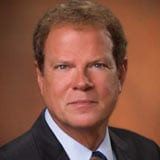The bull market could well roll on but the odds against it will keep growing, writes James Stack, editor of InvesTech Research.
Bull markets do not die from old age. Instead, the demise is brought on by imbalances—both economic and monetary. But the warning flags often appear well in advance, and in a variety of leading economic and key technical areas of the stock market.
As we enter 2011 and approach the second birthday of this bull market, the most important question we can ask is, “Where are we on the Wall Street roadmap?” So here is a brief updated perspective.
In historical terms, this bull market might still be young. At 22 months of age, it won’t celebrate its second birthday until March 9. And 80% of the bull markets during the past 80 years have lived beyond their second birthday.
Unfortunately, the survival rate starts dropping after that. Barely half of these past bull markets lived to see their third birthday, and only 33% extended much beyond four years.
In size, this bull market is already approaching the median gain of the past 15 bull markets since 1932 (+90.1% versus +101.5%). However, that does not necessarily worry us since this bull market followed the biggest bear market since the 1930s.
Nonetheless, we must maintain perspective that this bull market has covered a great deal of ground in a relatively short time frame. When looking at the 12-month, 24-month, and 36-month gains of past bull markets, today’s +90.1% has already surpassed the 36-month gains of all but one bull market of the past 80 years.
A Series of Unfortunate Events
It was December 1996 when Federal Reserve Chairman Alan Greenspan first recognized and acknowledged the “irrational exuberance” that was pervading Wall Street. Instead of taking any action like his predecessors have at times in the past to dampen the speculation, he proudly announced that the Fed would do nothing. That was like throwing lighter fluid on a fire.
Less than two years later, Greenspan’s Fed panicked during the collapse of the Long-Term Capital Management hedge fund and aggressively eased monetary policy in the eighth year of an economic expansion, when they most likely should have continued tightening.
If the subsequent Tech Bubble hadn’t become so large, then so much wealth ($7.4 trillion!) would not have been wiped out on Wall Street.
If the market hadn’t fallen so far in the largest bear market since 1938, then the Federal Reserve might not have panicked again in 2001 and dropped short-term interest rates to the lowest level in 50 years.
And without the next three years of artificially low interest rates, then all the mortgage shenanigans (liar’s loans, no-money-down loans, sub-prime loans, and adjustable rate mortgages), plus their accompanying derivatives, would never have reached the extremes that they did.
And without the mortgage meltdown and housing bust, the recent recession would definitely not have turned into the longest and deepest since the Great Depression.
Can the Fed Get It Right?
See where I’m heading with this? Even though we are on board the current bull market and have confidence the economic recovery will continue for now, I don’t have total faith in the Federal Reserve. So we’re going to be watching all of our technical, monetary, and fundamental economic tools closely as 2011 progresses.
We are entering the third year of the Presidential Election Cycle, which is historically the most profitable—on average. That’s the good news. The bad news is that years one and two of this current cycle have been exceedingly generous to investors. Such high returns reduce the odds that this will be a stellar year on Wall Street.
Realistically, I would temper expectations to a high single-digit percentage gain in the Standard & Poor’s 500 Index this year. [Stack’s relative caution is especially notable because he was bullish time and again at moments of widespread bearishness last year—Editor.]



















